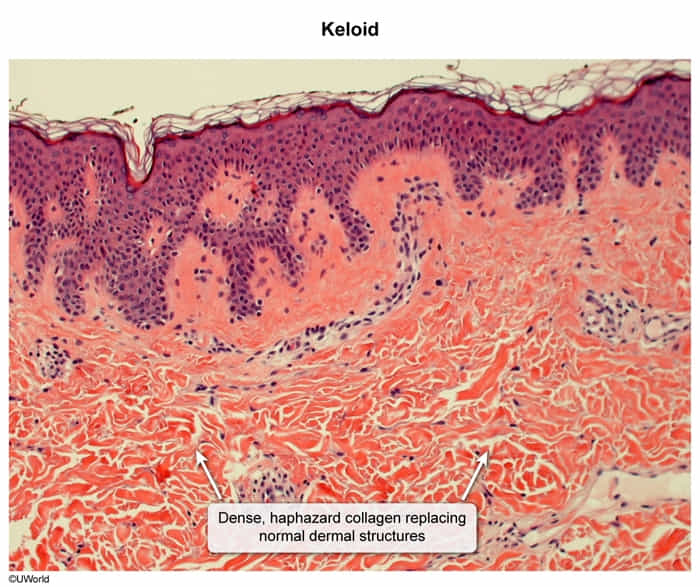- Definition: skin lesions caused by high fibroblast proliferation and collagen production as excessive tissue response to, typically small, skin injuries
- Etiology: imbalance in wound healing processes due to local factors and genetics
- Pathophysiology

- Increased synthesis and unorganized deposition of collagen type I and collagen type III
- Increased TGF-β expression and fibroblast proliferation
- Clinical features
- Brownish-red scar tissue of varying consistency (soft or hard) with claw-like appearance that grows beyond the boundaries of the original lesion
- Pruritus
- Pain
- Localization: earlobes, face (especially cheeks), upper extremities, chest, and neck
- Diagnosis: based on clinical appearance of lesion and patient history of trauma or surgery
- Treatment: same as for hypertrophic scars (see above)
- Keloid scars recur after surgical excision in up to 100% of cases. A combined approach to treatment may have more success than surgery alone.
- Prognosis
- Does not regress spontaneously
- Frequent recurrences after resection
